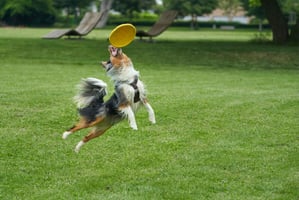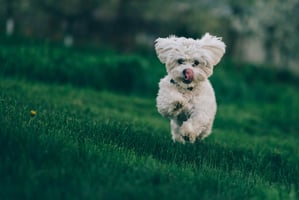Puppies are an incredibly rewarding addition to any family, but housebreaking them can be a...
Housebreaking a Puppy in Winter: Tips for a Successful Potty Training
Potty training a puppy in winter can be a challenging task but with the right tips and tricks, it can be done successfully. In this article, you will learn how to set up a successful potty training routine, what supplies are needed, and how to identify and address common behavioural issues. You will also find useful tips on how to take care of your puppy and keep them safe in the winter months.
Setting Up a Potty Training Routine
The first step in housebreaking a puppy in winter is to set up a potty training routine. This should include regular trips to the designated potty area and rewards such as treats and praise for successful potty trips. You should also use a crate to help your puppy learn to control their bladder and bowel movements. This will help them learn to “hold it” until they can get to their designated potty area.
It is important to be consistent and patient when potty training your puppy. If you are consistent with the potty training routine and reward them for successful potty trips, they will learn quickly and be housebroken in no time.
Supplies Needed for Potty Training
In addition to setting up a potty training routine, there are a few supplies you will need to ensure a successful housebreaking experience. These include a leash, a crate, and puppy pads. The leash will allow you to take your puppy to their designated potty area and the crate will help them learn to control their bladder and bowel movements. Puppy pads are also helpful for accidents that may occur in the house.
You may also want to invest in cleaning supplies such as an enzymatic cleaner to remove any odors from accidents and a steam cleaner to clean up any messes that may occur. This will help keep your house smelling fresh and clean.
Identifying and Addressing Common Behavioural Issues
When potty training a puppy in winter, it is important to identify and address any behavioural issues that may arise during the process. Common behavioural issues include barking, chewing, and digging. If your puppy is exhibiting any of these behaviours, it is important to address them immediately.
Barking can be addressed by providing your puppy with plenty of exercise and mental stimulation. Chewing can be addressed by providing your puppy with plenty of chew toys and by redirecting their attention when they start to chew on something they shouldn’t. Digging can be addressed by providing your puppy with an appropriate digging area and by redirecting them when they start to dig in the wrong place.
Caring for Your Puppy in the Winter Months
When housebreaking a puppy in winter, it is important to take extra steps to ensure their safety and comfort. This includes providing them with a warm and comfortable place to sleep, such as a crate or a bed with a thick blanket. It is also important to make sure your puppy is getting enough exercise and mental stimulation to help prevent boredom and destructive behaviours.
To protect your puppy from the cold, you should provide them with a warm coat or sweater when they go outside. You should also keep their paws warm and dry by wiping them down after they come in from the cold and by providing them with booties if necessary.
Conclusion
Housebreaking a puppy in winter can be a challenging task but with the right tips and tricks, it can be done successfully. Make sure to set up a potty training routine, provide the necessary supplies, and address any behavioural issues that may arise. Also, take extra steps to ensure your puppy’s safety and comfort by providing them with a warm and comfortable place to sleep and protecting them from the cold. With a little patience and dedication, your puppy will be housebroken in no time.



